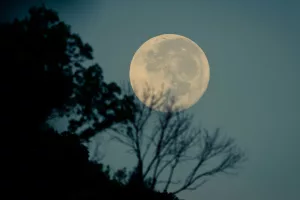Observing the International Space Station is a thrilling experience that connects us to the vast wonders of space exploration. The International Space Station (ISS) is a remarkable sight to behold in the night sky. To catch a glimpse of the ISS, you need to know when and where to look. The ISS orbits the Earth approximately every 90 minutes, traveling at a speed of about 17,500 miles per hour. It reflects sunlight off its solar panels, making it visible to observers on Earth as a bright object moving quickly across the sky, resembling a fast-moving star.
Understanding the ISS and Its Orbit
Before diving into viewing techniques, it’s beneficial to understand what the International Space Station is and how it operates. Launched and managed by a coalition of space agencies including NASA, Roscosmos, JAXA, ESA, and CSA, the ISS serves as a microgravity and space environment research laboratory. It orbits the Earth at an average altitude of about 420 kilometers (260 miles) and can travel over 28,000 kilometers (17,500 miles) per hour.
The Orbit and Path
The ISS orbits in a low Earth orbit, meaning it is relatively close to Earth compared to other satellites. This proximity allows for more frequent viewing opportunities. Its orbit is inclined at 51.6 degrees to the equator, enabling it to pass over 90% of the Earth’s population. This inclination means that the ISS does not just travel in a straight line but follows a complex path that allows for optimal coverage of numerous regions.
Choosing the Right Time and Location
One of the best times to see the ISS is when it passes overhead in the early morning or evening hours. During these times, the station is illuminated by the sun while the ground below is in darkness, creating a stark contrast. This is the key to its visibility — the ISS shines brightly because sunlight reflects off its large solar panels.
Ideal Conditions and Locations
- Dark Skies: For optimal viewing conditions, make sure you are in a dark location away from city lights to maximize visibility. The contrast between the darkness of the sky and the brightness of the ISS enhances its visibility.
- Clear Weather: Cloudless nights offer the best chance to see the ISS without obstruction. Check local weather forecasts to ensure clear skies.
- Elevation: Higher elevations can reduce atmospheric interference and light pollution, further improving visibility.
Using Technology for Timing
There are various websites and apps available that can help you track the ISS’s upcoming passes, providing you with accurate information on the timing and direction of its visibility from your location. Some popular options include:
- NASA’s Spot the Station: Offers email alerts and a website for tracking.
- Heavens-Above: A comprehensive site providing detailed predictions.
- ISS Tracker Apps: Several mobile apps are available for real-time tracking and alerts.
Identifying the ISS in the Night Sky
The ISS appears as a bright, fast-moving star crossing the sky. It does not blink like a plane and typically outshines any other stars in the vicinity due to its size and reflective surfaces. Keep an eye out for a steady, non-flashing light moving steadily across the heavens, unaffected by atmospheric conditions that may cause twinkling in stars. As it travels across the sky, it may disappear from view as it moves into Earth’s shadow, becoming fainter before re-emerging into sunlight.
Distinguishing the ISS from Other Objects
- Speed: The ISS moves faster than airplanes and is visible for a shorter duration, usually between three to six minutes.
- Brightness: It often appears brighter than most stars and planets, sometimes even rivaling Venus, the brightest planet visible from Earth.
- Path: Unlike airplanes, which often follow erratic paths, the ISS travels in a smooth, predictable arc.
Equipping Yourself for Viewing
While the ISS is visible to the naked eye, using a pair of binoculars or a small telescope can enhance your viewing experience by allowing you to see more detail. With magnification, you’ll be able to observe the structure of the space station, including its solar panels and possibly even distinguish its shape. Observing the ISS through binoculars or a telescope can provide a closer look at this incredible feat of human engineering as it gracefully glides across the sky.
Recommended Equipment
- Binoculars: A pair of 7×50 or 10×50 binoculars can significantly enhance the viewing experience.
- Telescope: A small telescope with a wide field of view can allow you to see the station’s shape more clearly.
- Camera: Consider capturing the moment with a camera. Use a tripod and long exposure to photograph the ISS’s trail across the sky.
Staying Updated and Patient
Patience is key when trying to spot the ISS in the night sky. Keep checking the tracking websites or apps for the latest information on upcoming passes in your area to increase your chances of witnessing this awe-inspiring sight. Weather conditions and the station’s orbit can affect visibility, so staying informed about the ISS’s schedule and being prepared to wait for the perfect moment to view it can greatly enhance your experience.
Handling Weather and Unexpected Changes
- Be Flexible: If clouds or weather conditions change, be prepared to adjust your plans.
- Observe Regularly: The ISS has frequent passes, so missing one opportunity doesn’t mean you won’t have another chance soon.
The Science and Human Element
Observing the ISS is not just about seeing a bright light in the sky; it’s about connecting with the ongoing efforts of humanity to explore space. The ISS houses a crew of international astronauts who conduct scientific research that benefits life on Earth and prepares us for future missions to the moon and Mars.
The Role of the ISS
- Research: Studies conducted aboard the ISS cover a range of disciplines including biology, human biology, physics, astronomy, and meteorology.
- International Collaboration: It represents a collaborative effort among countries, fostering international cooperation in space exploration.
Common Mistakes and How to Avoid Them
- Ignoring Light Pollution: Light pollution is a major obstacle. Always try to find the darkest spot possible.
- Wrong Timing: Missing the ISS due to incorrect timing is common. Double-check your source for accuracy.
- Overlooking Resources: Many miss the opportunity due to a lack of information. Utilize available websites and apps for precise timing.
Real-Life Case Studies
A Family’s First Experience
Consider the Smith family from rural Nebraska. Armed with a smartphone app, they planned an evening picnic on a clear summer night. With their children excitedly looking up, they spotted the ISS right on schedule, a bright dot speeding across the sky. The experience sparked a curiosity in their kids about space science, leading to a newfound family interest in astronomy.
An Amateur Astronomer’s View
John, an amateur astronomer from Sydney, used his telescope to view the ISS. One evening, he managed to photograph the station as it passed in front of the moon, capturing a stunning silhouette. This rewarding experience was a result of careful planning and timing, demonstrating the power of preparation and knowledge.
A Step-by-Step Guide to Viewing
- Research Viewing Times: Start by checking websites like Heavens-Above or apps like ISS Tracker for upcoming viewing opportunities in your area.
- Plan Your Location: Choose a dark, clear, elevated spot away from city lights.
- Prepare Your Equipment: If using binoculars or a telescope, set them up beforehand and ensure they are properly focused.
- Arrive Early: Get to your location at least 15-30 minutes before the scheduled pass time.
- Observe: Look for a bright, fast-moving object in the sky. Use your binoculars or telescope to get a closer view.
- Capture the Moment: If photographing, use a tripod and long exposure settings to capture the ISS’s trail.
The Experience of a Lifetime
Remember that the ISS offers a unique opportunity to witness humans living and working in space, creating a memorable experience that is worth the wait. Whether you’re a seasoned astronomer or a curious first-time observer, seeing the ISS can be a deeply rewarding experience. It serves as a reminder of what humanity can achieve when we reach for the stars together.
By following these practical tips and staying informed, you can greatly increase your chances of enjoying a successful and fulfilling ISS viewing experience. Whether you’re watching solo, with family, or as part of a community event, the sight of the ISS traversing the night sky is sure to inspire awe and wonder.



